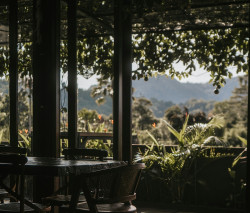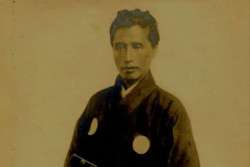
Originally published on metropolis.co.jp on September 2012

SICK BASTARDS
- The former chief executive of IBM Japan was busted for using his iPod to take photos up the skirt of a woman on an escalator at JR Yotsuya station. The 63-year-old man told police, perhaps unnecessarily, that he was “interested in voyeurism.”
- Meanwhile, a 27-year-old assistant judge in Osaka was arrested for taking upskirt videos of a woman in her 30s with his cellphone camera on a subway. The randy jurist told the cops, apparently with a straight face, that he “wanted to know what kind of underwear she was wearing.”
- Fifty caregivers at a facility for the mentally disabled in Tochigi have been accused of misappropriating some ¥150 million of the residents’ money.
- About 40 percent of Japanese workers diagnosed with cancer say their employers have “transferred them or urged them to retire.”
SAYONARA
- For the first time ever, a mammal known to be alive during the Showa Period (1926-1989) has been declared extinct. The Japanese river otter, named a special natural treasure, hasn’t been spotted since 1979.
- A newspaper report revealed that the city halls of 35 municipalities in Japan “are at risk of being submerged” when the expected Nankai Trough megaquake strikes Kanto and Kyushu.
- A group of high-school students from Miyagi visited NATO headquarters in Brussels late last month. According to an official, the kids were invited because “NATO nations and Japan share the same values.”
- A film shot on Okinawa by a Canadian director won a prize called the Openness to the World Award at the Montreal World Film Festival. No, we don’t know what the heck that is, either.
MILESTONES
- Surgeons at Okayama University Hospital conducted Japan’s “first combined liver-kidney transplant from a brain-dead donor.” A similar operation was attempted in 2010, but the recipient died before the new kidney could be implanted.
- The education ministry says the ratio of female faculty members at Japanese universities—21.2 percent—is the highest it’s ever been.
- Officials at Tokyo Skytree Town announced that the number of visitors to the complex during its first 100 days—16.66 million—is more than half of the number they expected during the entire first year.
- A building under construction in Osaka topped the 296-meter mark, surpassing Yokohama’s Landmark Tower to become the tallest skyscraper in Japan. (The people who classify these things consider the 634m Skytree to be a tower, not a skyscraper.)
BLASTS FROM THE PAST
- Among the items on display at an exhibition of Showa-era electronics in Adachi Ward are “a manually operated washing machine and an electric fan that creates a scent as it blows.”
- The government agreed to pay an annual sum of ¥240,000 to 1,370 people who were sickened by contaminated cooking oil in a mass food-poisoning incident in 1968.
- Officials at JR Tsuruoka station in Yamagata Prefecture put on display a plaster statue of Hachiko made by the same sculptor who created the famous statue of the dog in Shibuya.
- Bottom Story of the Week: “Preservation Sought for Old Tokyo Detention Facility Praised by Charlie Chaplin” (via The Mainichi)
NICE WORK IF YOU CAN GET IT
- The TMG is offering ¥60 million in subsidies for Tokyoites to travel to Fukushima. Tourists on a one-day trip can get assistance to the tune of ¥1,500, while people staying overnight get ¥3,000.
- Japanese astronaut Akihiko Hoshide took an eight-hour spacewalk outside the ISS late last month but couldn’t manage to “replace a robotic arm camera and install a thermal cover on a docking port.”
- The government said its new anti-global warming strategy will involve getting emission rights from emerging nations in exchange for providing those countries with “energy-saving technologies.”
- Following up on Japan’s bid to have Mt. Fuji listed as a world heritage site, an advisory body for UNESCO began a field survey of the mountain.
THE NEW DROPOUTS
- The education ministry said about 33,000 new college graduates—or about 6 percent of the total—are living as NEETs.
- The Diet passed a bill that would allow Osaka and other cities to establish administrative wards similar to Tokyo’s. The law, says one pol, “paves the way for each prefecture to create its own urban structure.”
- Tokyo Electric Power Company announced that—oops!—water-injection efforts at two reactors at the crippled Fukushima Daiichi nuclear power plant “dropped below the level regarded as necessary to keep the fuel inside cool.”
- Wondering why the weather this summer seemed so brutal? It turns out that eastern Japan got 1.3 times more sunlight in August compared to normal years, while temperatures were 1.2C higher than average and rainfall was just 61 percent of the norm.
BRIGHT IDEAS
- At the top of the government’s list of infrastructure development projects is making sure that all 268 major train stations around the country are earthquake-proof. (A “major” station is one that’s used by more than 10,000 people a day.)
- Officials at the education ministry announced a plan to provide certificates for students who engage in volunteerism. The goal is to encourage youngsters “to accumulate diverse experiences before joining the workforce.”
- The foreign ministry eased its advisory against travel to Egypt, which had been in force since anti-government protests began last year.
- The Japan Direct Marketing Association said total sales for online and mail-order shopping in fiscal 2011 hit ¥5 trillion for the first time.
Compiled from reports by AP, Japan Today, The Japan Times, Jiji, The Tokyo Reporter, Japan Probe, The Mainichi, Daily Yomiuri, AFP, Xinhua, Reuters and Kyodo







